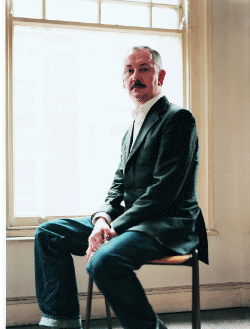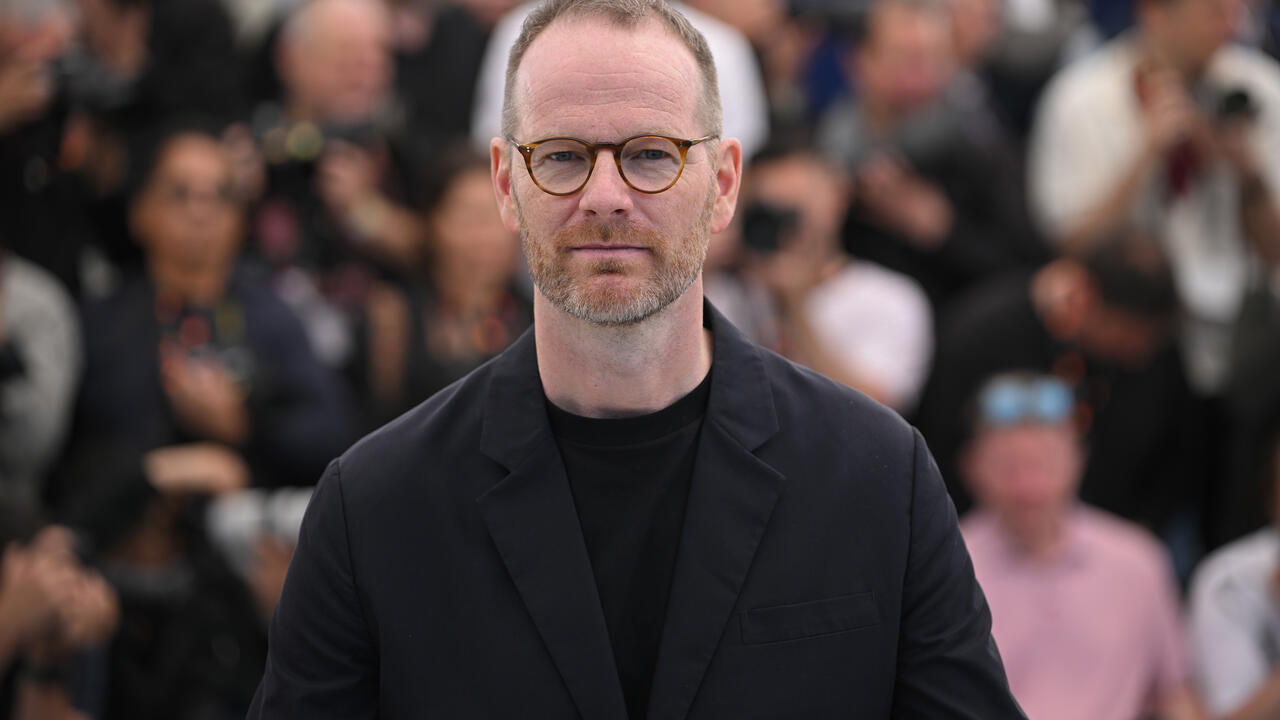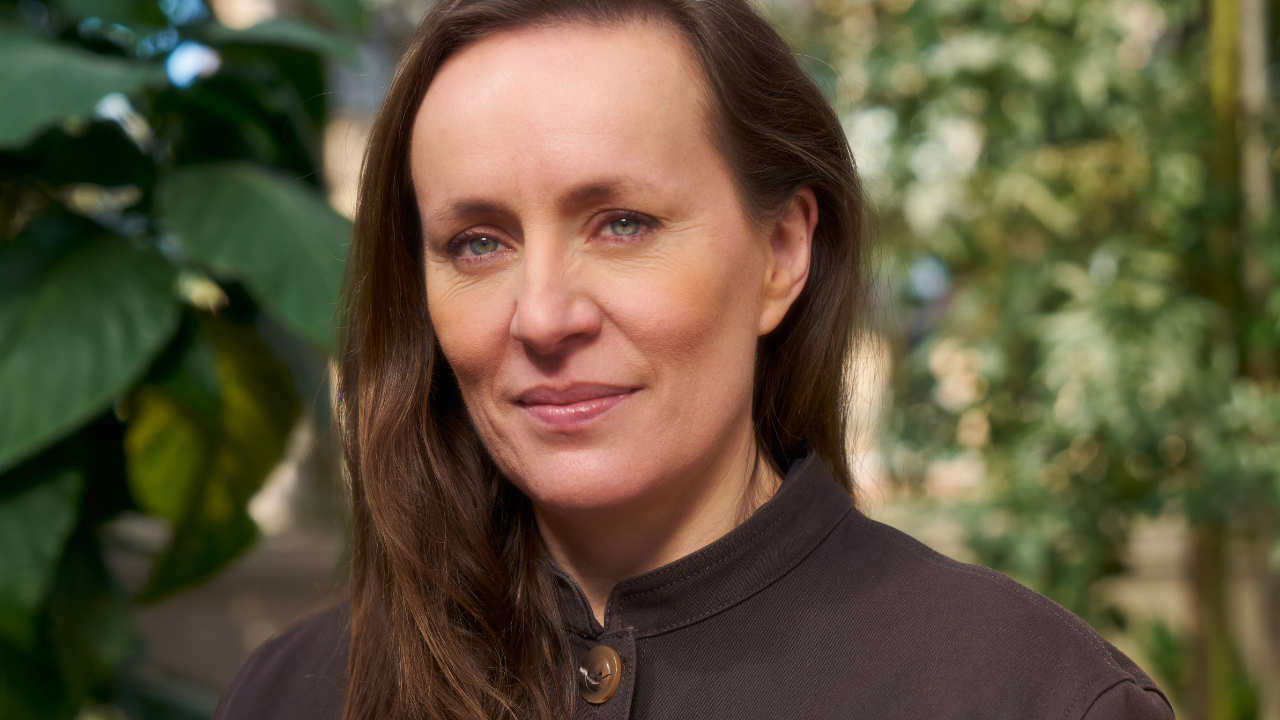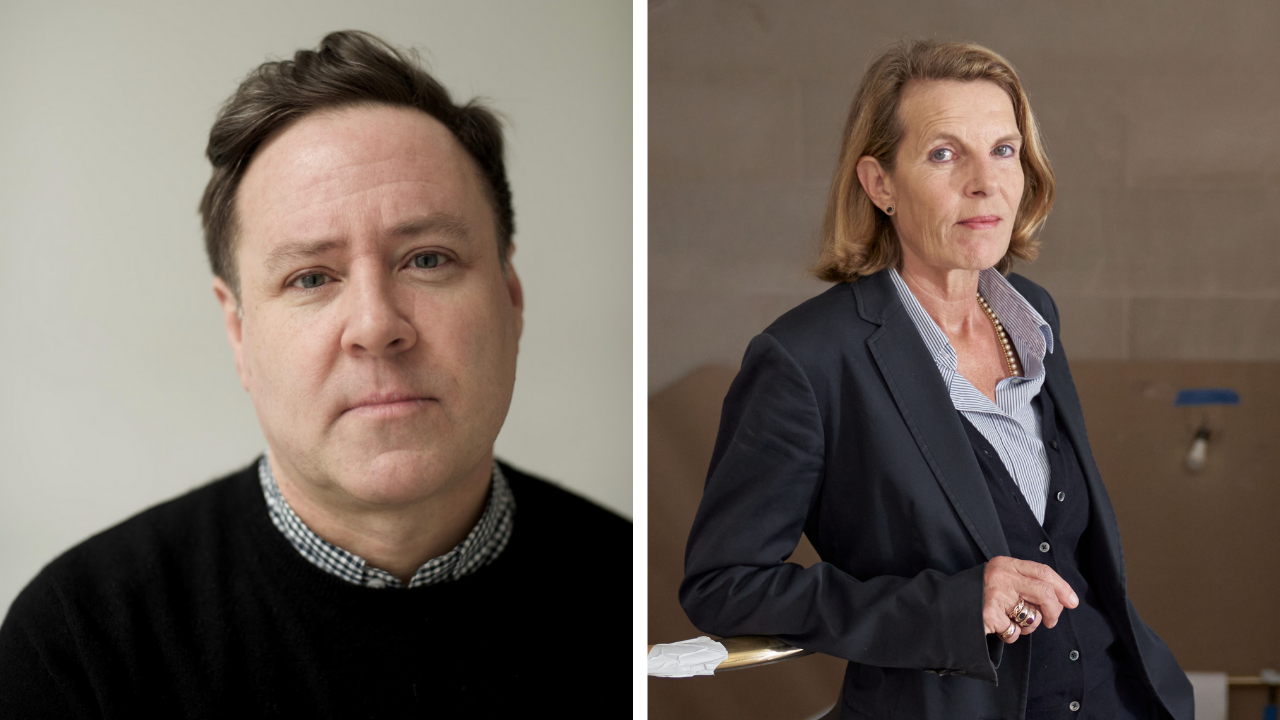Innocence and Experience
frieze talks to Cerith Wyn Evans
frieze talks to Cerith Wyn Evans

frieze Tell us about your early films that were recently screened at Bloomberg Space, London.
Cerith Wyn Evans It was three DVDs of very loosely edited footage shot from 1978 to about 1984, while I was a student, initially at St Martin's and then at the Royal College of Art. They were made with very limited technical knowledge to begin with. I did my first film because I hadn't made any work at all during my first two years at St Martin's and was threatened with expulsion - letters were written to my parents ...
f Why didn't you make anything?
CWE Coming to London in 1977, there were many more exciting things to do than be in art college, though art was my first love. I was torn between thinking, 'Oh I must look up the footnotes in Yolanda Bettes' White Columns catalogue ...' - I was really into the arcane vicissitudes of art history and Conceptual art practice - and the hysterical freedom that came from moving to London and breaking out of the confines I'd experienced growing up in Wales. The films were made in this context. I made the first, Still Life with Phrenology Head (1979), because I had a certain amount of arrogance, a sort of snootiness during my first couple of years at St Martin's. It was a sense of intellectual sup-eriority that I mistranslated from the teachings of people like John Stezaker, who was, and still is, my absolute hero. He taught me amazing things, showed me amazing books. Being young and arrogant, I thought there was something rather vulgar about adding further formal objects to the world - actually making work would be letting the side down. Of course this was a throwback to a certain hippy branch of the anti-Vietnam movement of the mid-1960s; when I was at St Martin's, there was the same ethos in the Punk spirit - the do-it-yourself fanzines, clothes and music; in a sense the articulation of this spirit changes but it never wholly goes away.
I always thought of the first films as sculptures or recorded performances; they were documents, if you like. I made three Super-8 films with sound in the space of four or five weeks in the bedroom of a squat in Warren Street. One - Still Life with Chairman Mao (1979) - was just the shadow of a vase of flowers moving in the breeze, cast on a huge coffee table book of 500 pictures of Chairman Mao that I found in a Communist bookshop in Chinatown. It was a fantastic book: Technicolor Chinese printing, no text whatsoever, just pictures of the Chairman from a baby to his body lying in state. In the film I turn the pages of the book to a Jazz Fusion soundtrack, the camera doesn't move and nothing happens. The first show that I saw when I came to London was Marcel Broodthaers' 'Décor' show at the ICA, which astounded me, so the early films were always about arrangement. I was interested in the idea that you could take things that had various traject-ories, histories, meanings and associations and make a collage-like assemblage that would generate various different little micro-discourses.
f Why film the objects rather than present them?
CWE Because many of the objects wouldn't keep still long enough. I remember looking at the work of Rudolf Schwarzkogler, and the Viennese Actionists like Otto Muehl and Gunther Brus: often Schwarzkogler would stage a performance for the camera, a private action, and all that would remain was the documentation. My first film was a step towards a commitment in making work. A lot of the work that I made was very much about entropy and decay, and this remains a fascination of mine - taking great care to do something that is seemingly entirely absurd. There's a ghost that emerges from believing that there are productive and even politically engaged and positive things that can come out of what seem like completely inconsequential and ephemeral acts.
f Did you watch many films?
CWE I loved the films of Warhol and Kenneth Anger, and the things that were coming out of mainstream art houses. Pasolini, Fassbinder, Godard - I would watch anything with subtitles. After seeing Anger's amazing films of the 1940s and 1950s, and reading William Burroughs, the notion of excess seemed very much worth dealing with; excess for excess's sake suggested a flowing-ness and a superabundance to things. Burroughs wrote 'The way out is the way through', which was very important for me. I'm attracted to many of my friends because of their exuberance. I don't think it's necessarily to do with them being fucked up, damaged show-offs, which many of them are (or sadly, were), but it's the exuberance that begins Georges Bataille's The Accursed Share (1988), a quote from Blake, "... exuberance is beauty". There is certain generosity in narcissism. I remember Anger saying that the amount of effort people put into their fantasies, the release through the ritual, that you see in something like carnival is incredibly important. A huge amount of psychical and physical labour goes into realizing something which isn't really about the day when you are dressed up and getting high but also about the whole epistemological function of fantasy. For me, that investment in excess is to be admired, because I'm not very stimulated by the formalism of obedience and repression.
f Do you still go to the cinema?
CWE No, no, no. You can't drink in the pictures. The piece TIX3 (1992) is a reference to being trapped in a cinema. Leigh Bowery loved any old trash. He would just leave everything, go to McDonald's, then go to Haagen-Dazs, then go to a blockbuster movie in Leicester Square, then go to Burger King, then go to Haagen-Dazs, and then go and see another film before catching the night bus home. One afternoon Leigh said 'I'll pay for you, I'll pay for you!' and I was taken to see something like Top Gun. After ten minutes of thinking I would be able to cope, I was fuming, mad, absolutely furious and stomped out of the cinema in a huff. I went through the wrong emergency exit on to Leicester Square, only to realize that the security doors were locked. I was trapped in a small space between the cinema and the doors that went on to the street. The only thing I could see was the little exit sign etched into Perspex in fluorescent green paint. All I could see was 'TIX3' - 'exit' written backwards - to the soundtrack of Top Gun. The work is about being in a space you are not 'meant' to be in. It came to represent that space of looking over your shoulder, like Lot's wife being turned into a pillar of salt for looking back at Soddom and Gomorrah. The idea that you don't normally see this because you are not looking for it. This was one of the first pieces of work that I made as what people curiously refer to as 'Cerith Wyn Evans, Artist' rather than 'Cerith Wyn Evans, Filmmaker'.
f Did it feel like a big step?
CWE Not at all. I've always thought of myself primarily as an artist. I studied sculpture for three years at St Martin's and went on to study film at the Royal College because I thought it would be interesting to learn how to make a film. Going on to making Degrees of Blindness (1988), sponsored by the BFI, was rather a dispiriting experience. Spending six, nine months making a piece of work is just too long. By the time it was finished and no one had seen it I was sick to death of it. That was the last film that I made as 'Cerith Wyn Evans, Filmmaker' and TIX3 was about recovering a certain immediacy.
f The work of 'Cerith Wyn Evans, Artist' is very romantic.
CWE Yes, I have to watch that.
f Elegiac too.
CWE I have to really watch that one! I think both terms are inherently contaminated. One of the things that I dare myself to do is inhabit those areas to see whether I can regain some vestige of what has been ruined or polluted (often through further ruin or pollution). I think it's very important for me to reconfigure the elegiac or the romantic. I read Mario Praz's Romantic Agony (1933) and Guy Debord's Society of the Spectacle (1967) while working as a road sweeper during the summer holidays in 1979. My work is profoundly concerned with the history of these ideas, but through the ghost of the experience rather than an immediate engagement with it. I don't know ... I really find the notion of the spiritual in art quite repulsive.
f Does it matter whether someone understands the references you use, or is just seduced by the materiality of the work?
CWE I'm not one to think that if the viewer hasn't read the label, then they haven't fully understood the piece of work. The phenomenology of the viewer is hugely problematic because, unlike Gilbert and George, I don't believe in 'art for all', and the work that I make isn't about populism. I'm not too bothered if someone goes 'Sorry, I didn't understand the piece, I haven't read George Bataille.' I've always tried to invoke a level of complexity. Even if the piece superficially looks like one light bulb going on and off, there are things immersed within the texture of the work that allude to other spaces and possibly other times. A work has to have a resonance so that it can move on different levels. I'm interested in evoking polyphony, superimposition, layers, levels, the occluded and the visibility of the mask. There are points of entry, as Burroughs would say. Certain conduits for thinking become different avenues for travel, rehearsing different scenarios, different routes that it's possible to take.
f The Dreamachine is a rather special conduit.
CWE Brion Gysin and I made a Dreamachine together in 1984, when there was a celebration entitled 'The Final Academy' of the work of, among others, Burroughs and John Giorno and Psychic TV. I showed films with Burroughs at Heaven while he was doing his readings, and we did a film screening with Gysin at the B2 Gallery in Wapping. I can remember meeting Gysin and ending up making, from his instructions, a cardboard model of the Dreamachine, the portable one that he and Ian Sommerville had originally built in London and took to Tangier.
Many years later I realized that the Dreamachine was one of the great experimental sculptures, so I thought, 'let's make another'. I went to a fabricator and said, 'these are the plans, it's made with an old record player and cardboard and paper clips etc., but what if we were to imagine we were Bang & Olufsen making a Dreamachine.' He took that rather literally and sent off for materials samples from Bang & Olufsen and we ended up making a production model. That somehow then became a catalyst. I did a residency at the Centre for Contemporary Art in Kita-Kyushu, and I took a Dreamachine with me. I wasn't interested in putting up text on the wall in English and Japanese saying 'this is how you use it', but by using traditional Japanese materials like the tatami mat, anyone familiar with what happens in a Japanese house immediately takes their shoes off and sits down on the little cushions around the outside. It travelled in different guises to many different institutions and museums which used it as a fill-in, a carry-all, something that represented many things.
Similarly there are now four Morse code works that have been made. Every year or two a new element emerges that seems to embody things I'm suitably engaged with, and then another element is somehow left out. For a recent piece in Brussels I was very excited to come to the root, in a very literal sense, of Marcel Broodthaers' use of a palm from the Belgian Congo, which he took from the Palais de Beaux-Arts. The exhibition is in the Grand Hall of the Palais de Beaux-Arts, so this is the point at which I wave goodbye to the literal reference to Broodthaers, because I'd returned to the point of inception.
f You once said that although you imagine you keep reinventing yourself, there are elements in your new work that you were exploring 25 years ago ...
CWE There is a comedic aspect in thinking that you are reinventing yourself - 'now we're going to make a radical departure and everyone is going to be really surprised!' All you are really doing is dyeing your hair a different colour. Many of the artists that I admire have traditionally held to this notion of reinvention, but if you look at Francis Picabia, for example, you realize that he's only really reinventing himself as a chameleon. The idea of reinventing yourself as someone who reinvents themselves is an incredibly tautological and traditional position.
When I look back at things from a slightly different angle, they take on metaphoric properties and remind me that what I currently find so engaging and fascinating, which feels so absolutely brand new, has been there for a very long time. One very simple, quite formal, element in a very early film was a revolving mirror; the works I am making now are revolving mirror mobile pieces. I try and evoke in the work an interstitial space between picture and word or language and another language, between on and off: the in-between spaces that Merleau-Ponty talks about in The Visible and the Invisible (1964). Things that are in between one person's perception and another person's perception. There's a quote that I'm fond of, which, if I can remember, goes 'How are we to name, to describe, such as I see it from my place that lived by another? ...How could I conceive, precisely as his, his colours, his pain, his world, except as in accordance with the colours I see, the pains I have had, the world wherein I live? My private world has ceased to be mine only; it is now the instrument which another plays, the dimension of a generalised life which is grafted onto my own.' He goes on to talk about the point at which we really are sovereign, relatively alone in our own cognitive world, yet at moments we can share a glimpse.
f So your work is solipsistic?
CWE Yes it is but I'm not embarrassed by that. I'm very attracted to a form of dandy-ism, in the wilful abuse of the viewer actually, I'm very interested in ways of just not making life that much easier, because I think there are ultimately benefits to that in ethical terms. There are benefits within the wilful approach, because you can change and question assumptions. You can enter into a different discourse if you don't take on board the given of liberal humanism. This is related to the dandy in that it inverts a common sense or logic rooted in prejudice and generated by notions of morality and creativity for the common good.
The idea of making work in a rarefied atmosphere is something that I'm stimulated by - a notion of encryption, of actually making someone aware that the invisible is also perceivable ...






















